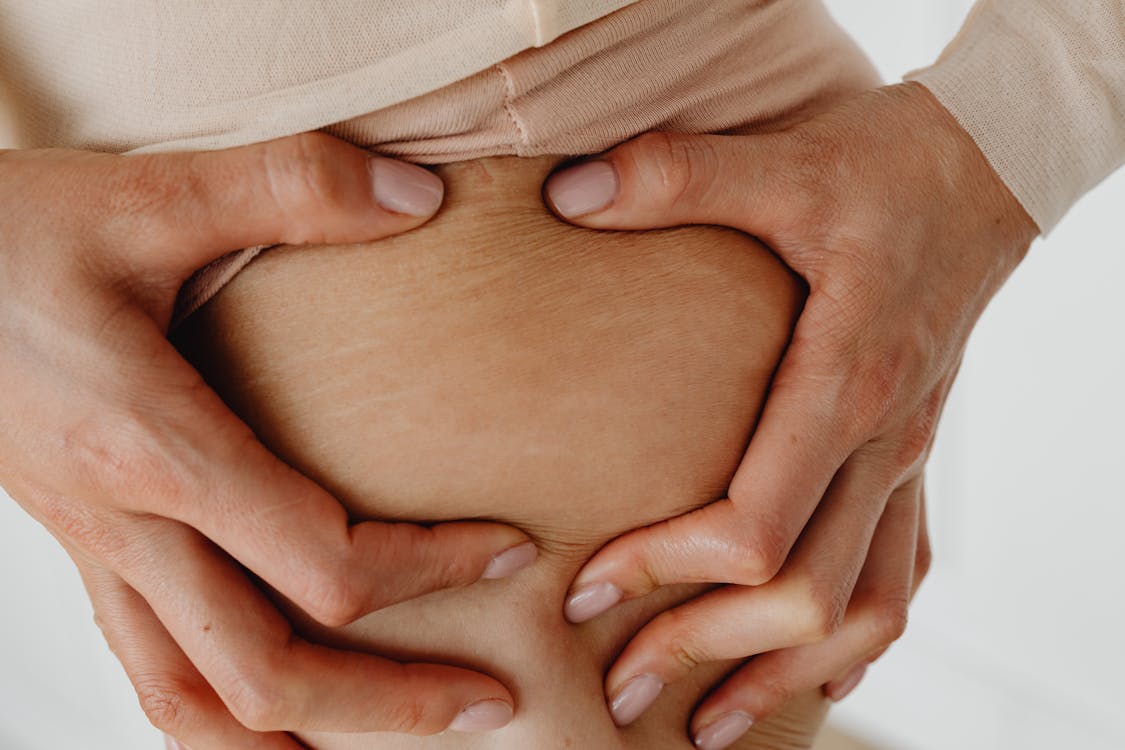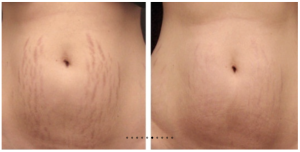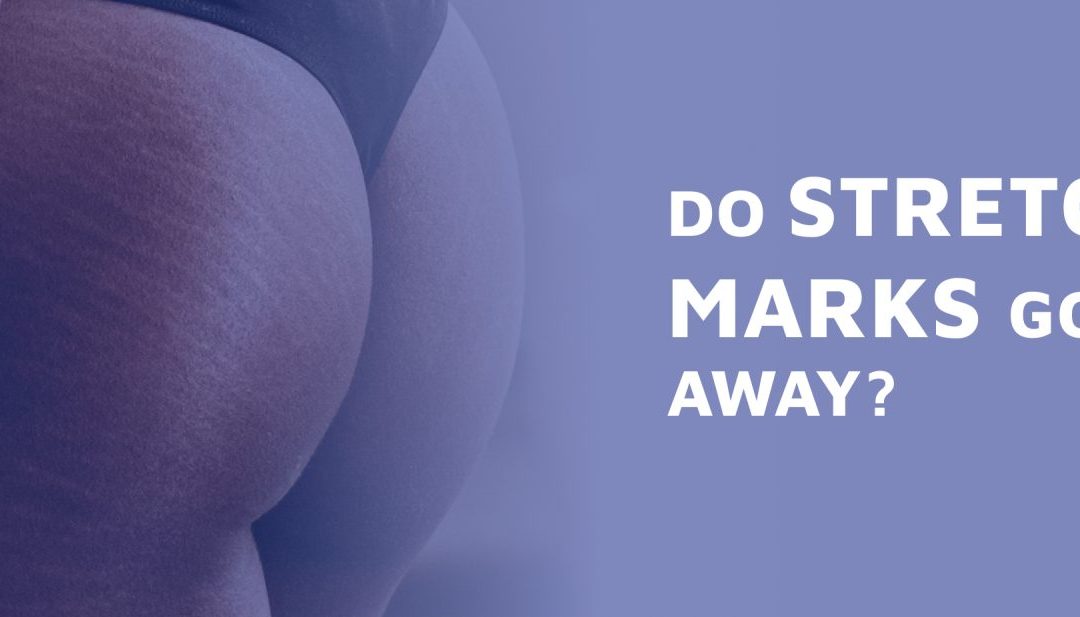The appearance of stretch marks can be something that a person finds very concerning. It is not just a condition of pregnant women although that is the most common cause. While it is a common skin issue, in itself it does not pose any significant danger to health but depending on the cause, it can create emotional distress.
The most usual questions asked by patients of doctors and cosmetic surgeons are what they are, what causes them, and what treatments are available. Let’s answer them!
What Are Stretch Marks?
Although men can get them, stretch marks are more common in women.
Known medically as striae, striae distensae, striae gravidarum, and striae atrophicans, stretch marks are a form of scar. They are often likened visually to tiger stripes. When they first appear, striae are pink, red, purplish, or brownish. Over time, reddish stretch marks and purple stretch marks will become white or silver. Marks in the red to purple range are known as striae rubra and those in the white to the silver range are known as striae alba.
Generally, they start dark and fade over time. How dark and prominent they appear is down to the individual’s skin color and tone.
These narrow bands develop when the skin stretches or shrinks quickly. In response to the abrupt change, collagen and elastin rupture. Collagen and elastin are essential substances that support the skin and keep it healthy so when something affects them the body initiates a healing response. In this healing process designed to prevent skin from breaking or splitting, stretch marks begin to appear.
They are most commonly found around the abdomen but also appear on the breasts, upper arms, chest, buttocks, legs, hips, and back.
What Causes Stretch Marks?
There are several different causes and risk factors that can lead to their development and some people are more at risk of stretch marks than others.
- It is generally believed that fluctuating hormones can have a large role to play in their occurrence and there is no recognizable discrimination between skin tone or skin type. Stretch marks can occur on darker skin, dry skin, firmer skin, and normal skin in equal measure.
- Rapid growth and puberty-induced growth (which often means sudden growth spurts) are leading causes of stretch marks in younger people, with collagen growth struggling to keep up with the overall growth of the body during this period.
- Pregnant women are very likely to experience stretch marks as their stomachs begin to expand to accommodate their growing child. Stretch marks during pregnancy are a universally common experience.
- A sudden weight gain means that the skin will start to stretch faster than collagen production can accommodate. Similarly, there may be marks after weight loss.
- Individuals of a healthy weight who undertake weight training can also experience stretch marks if they get rapid muscle growth.
- There is evidence that corticosteroid creams and other steroid products can increase the risk of stretch marks because they hinder the skin’s ability to stretch.
- Medical conditions can be a direct cause: Cushing’s syndrome, Marfan syndrome, Ehlers-Danlos syndrome, chronic liver disease, and anorexia nervosa.
- Other medical reasons for striae include problems with the adrenal glands and issues with the production of the hormone cortisol. An excess of cortisol can reduce skin elasticity.
- It is also thought that if there is a history of stretch marks in the family, it is a hereditary trait.
How Can Stretch Marks Be Treated?

There are plenty of treatments, both non-invasive and topical treatments, that can be employed to counteract the appearance and persistence of mature stretch marks. People fond of natural remedies over topical creams believe olive oil, almond oil, and cocoa butter will stimulate the growth of collagen to reduce the visual effect of stretch marks. However, there is no scientific evidence to back this.
Dermatologists, doctors, and other health care providers may prescribe a variety of topical treatments including hyaluronic acid cream and Tretinoin cream (not safe in pregnancy as it may cause skin irritation). They may also suggest treatments more associated with the cosmetic surgery industry and plastic surgeons.
Some of the most common and most effective treatments that might be recommended include:
Microdermabrasion
One of the ‘lightest’ treatments for stretch marks, microdermabrasion is generally recommended for newer striae. Some consider it to be a safer and cheaper option than both laser therapy and chemical peels but it does not have great results on old, deeper, and more highly colored striae.
This treatment exfoliates the skin’s outer layer to help repair the damaged skin by improving circulation and stimulating the production of collagen. Old dead cells are worked away from the skin with tiny fine crystals and the treatment usually lasts 30 to 60 minutes. Generally, several repeat treatments are required to produce visible results.
Laser Resurfacing
Laser resurfacing is an effective treatment for striae. It is an FDA-approved method for both skin mark reduction and skin tightening, using a non-ablative or ablative fractional laser to create microchannels of heat on the skin. This has the effect of boosting elastin and collagen production. It can shrink the appearance of scarring and stretch marks while importantly protecting the surrounding skin tissue.
The same kind of laser can also be used to treat other skin conditions and issues like acne scars, wrinkles, and fine lines. Laser resurfacing can be safe for all skin types, but it is highly dependent on the type of laser. A consultation with an experienced physician is needed to determine if this treatment is right for you.
You will start to notice positive results from laser resurfacing after about four sessions, six weeks apart. There is also a slow-release benefit from the treatment, with new collagen continuing to be produced for up to six months after the last session.
Microneedling
Also known as skin needling or Collagen Induction Therapy (CIT), microneedling involves repeatedly and rapidly puncturing the skin with tiny sterile needles, to stimulate the skin’s natural ability to repair itself by stimulating collagen production.
A benefit of microneedling is that the treatment is able to penetrate the deeper parts of the skin without having a traumatic effect on the top layers. It can help with everything from stretch marks, light scarring, acne, photodamage, and skin texture.
Genius RF

Genius RF is a kind of enhanced microneedling treatment that works by sending radio frequency energy into the skin through the use of a set of very fine gold-plated needles. The effect this has is to stimulate the body’s elastin and collagen production. The process enables real-time feedback so the energy can be delivered in a really precise way for each individual patient.
With most conventional microneedling and laser treatments, there is a risk of trauma to the layer of skin being treated and this can lead to areas of hyperpigmentation. Genius RF is administered into the deeper layers of the dermis, bypassing the epidermis and reducing the risk of hyperpigmentation. This means that Genius RF can be administered to all skin tones, even the darkest skin types.
Where to Get Treatment
As with any medical or transformative treatment, it is important to make an informed choice of where to get the procedure. Your choice needs to be professional, accredited, and if necessary, licensed. The Z Center For Cosmetic Health in Sherman Oaks is a reputed clinic under the medical supervision of Dr. Michael Zadeh, a Board Certified Surgeon and Fellow of the American College of Surgeons. Every patient is treated to a personal consultation to ensure the right treatment is provided.






